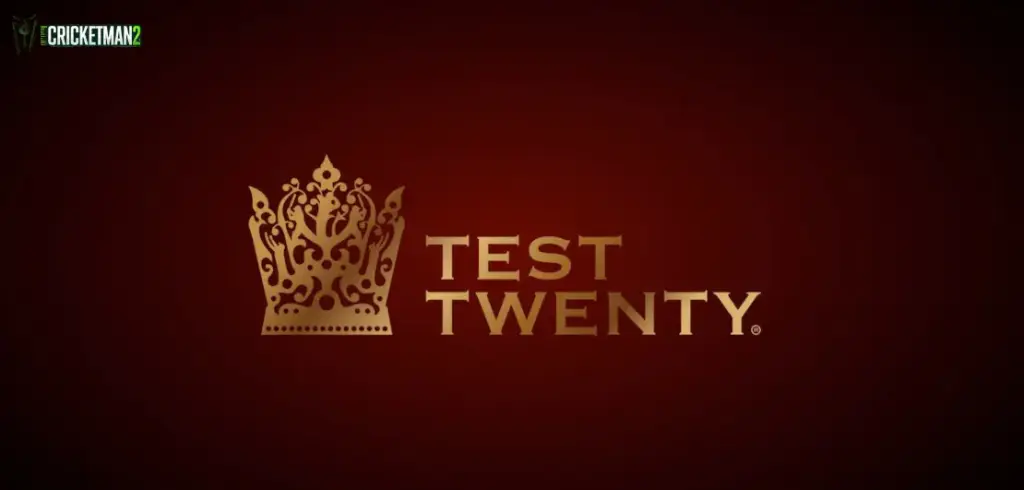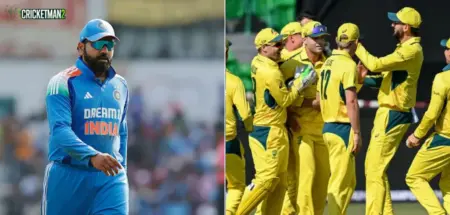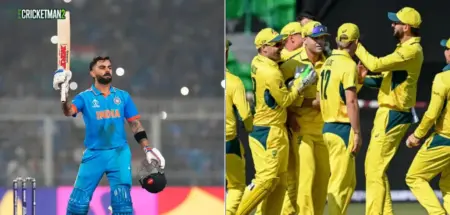Cricket has entered a new era with the introduction of Test Twenty, the world’s first 80-over format that blends the strategy of Test cricket with the energy of T20s. Designed for young players aged 13 to 19, this revolutionary format aims to make the game more inclusive, data-driven, and globally accessible.
Test Twenty, conceptualized by Gaurav Bahirvani (Executive Chairman, The One One Six Network), is backed by legends AB de Villiers, Harbhajan Singh, Sir Clive Lloyd, and Matthew Hayden, and is set to officially debut in January 2026.
What is Test Twenty?
Test Twenty, also called “Test T20”, is cricket’s newest hybrid format, combining the tactical depth of Tests with the excitement and pace of T20 matches.
- Each match is played over 80 overs in total.
- Both teams bat twice, with two innings of 20 overs per side.
- The scores are carried forward between innings, just like in Test cricket.
- Matches can end in a win, loss, tie, or draw, maintaining the traditional results of cricket.
This innovative design allows all the strategy, momentum shifts, and comebacks of Test cricket — condensed into a single day.
See Also:- Match Suspended Meaning in Cricket
Key Highlights of Test Twenty
| Feature | Description |
|---|---|
| Total Overs | 80 overs (2 innings of 20 overs per team) |
| Format Duration | Completed in one day |
| Result Possibilities | Win, Loss, Tie, or Draw |
| Target Audience | Youth (13–19 years) |
| First Season | January 2026 |
| Teams/Franchises | 6 (3 Indian, 3 international) |
| Innings Rules | Scores carried forward |
| Technology Used | AI-based discovery and selection system |
Test Twenty Cricket Rules and Regulations
1. Powerplay Rule
Each team gets one Powerplay of four consecutive overs per match.
- The captain decides in which innings to use it.
- Only two fielders are allowed outside the 30-yard circle.
- If not declared before the 7th over of the second innings, it is automatically applied in overs 7–10.
Purpose: Introduces strategic depth — whether to attack early or save it for the endgame.
2. Follow-On Rule
If the team batting second trails by 75 or more runs after both first innings, the first team’s captain can enforce a follow-on.
- The trailing team bats again immediately.
- The first team then bats last, maintaining the Test-style structure.
Purpose: Revives classic Test cricket drama within a compact format.
3. Early Collapse Clause
If a team is bowled out before 10 overs in its first innings:
- The opponent gains three bonus overs in their first innings.
Example: If Team A gets out in 8 overs, Team B’s first innings becomes 23 overs instead of 20.
Purpose: Punishes reckless batting and rewards strong bowling.
4. Bowling Allocation
- A maximum of 5 bowlers per match.
- Each bowler can bowl up to 8 overs total (across both innings).
- Overs can be distributed unevenly (e.g., 6 in one innings, 2 in the other).
Purpose: Adds tactical complexity for captains to manage resources wisely.
5. Wides and No-Balls
- Standard T20 rules apply (1 run + extra delivery).
- Front-foot no-ball = automatic free hit.
- If a bowler delivers 3 or more wides/no-balls in an over, the batting team earns 3 extra penalty runs.
Purpose: Maintains fast-paced, disciplined bowling while penalizing errors.
Read Also:- How to Calculate Follow on in Test Cricket
6. Conditional Draw
- If the second batting team loses fewer than 5 wickets by the final ball, they can claim a draw.
- Once the 5th wicket falls, the match must result in a win or loss.
- Weather interruptions also lead to a draw.
Purpose: Keeps the Test essence alive — rewarding defensive resilience.
7. DRS and Review System
- Each team gets two unsuccessful reviews per innings.
- 15-second decision time for referrals to maintain match flow.
8. Over Rate and Time Control
- Every innings has a time limit decided by the match referee.
- Failure to maintain over rate: 5 penalty runs + loss of one strategic timeout.
9. Tie and Super Session
If aggregate scores are level:
- Match goes into a Super Session (one-over eliminator).
- If still tied, the team with more boundaries across both innings wins.
Player Selection and Talent Development
Test Twenty is built for youth aged 13–19. The selection process merges AI analytics, data intelligence, and expert evaluation to identify raw talent from around the globe.
Selection Routes:
- Direct Entry: For players recommended by registered cricket academies, national administrators, or notable cricketers.
- Standard Entry: Begins with AI-driven Level 1 trials, followed by city-level trials and national/global talent pools.
From the 1,000 shortlisted players, only 300 reach the Global Auction Pool.
- 96 players are drafted across 6 franchises (each team: 8 Indian + 8 international).
- The remaining 204 players form the Wildcard Pool, eligible for mid-season inclusion.
Franchises and Launch Plan
- Season Start: January 2026
- Host Nation (First 2 Seasons): India
- Teams: 6 franchises — 3 Indian (city-based) and 3 global (Dubai, London, U.S.)
- Squad Size: 16 players per team (8 Indian + 8 overseas)
Franchises are expected to include next-generation icons and celebrity co-owners, making it both a talent and entertainment platform.
Technology & Innovation
At the heart of the format lies the AI Discovery Engine, a first-of-its-kind system combining:
- Motion-sensor analytics
- Machine learning algorithms
- Video-based player evaluations
This technology ensures a transparent, bias-free scouting system. It will also be shared globally with cricket boards via Tech-Transfer Partnerships (TTPs), creating a universal data-based cricket ecosystem.
Voices Behind Test Twenty
- AB de Villiers: “Test Twenty is innovation with intent — honouring tradition while embracing the future.”
- Sir Clive Lloyd: “It brings back the art and rhythm of cricket with modern energy.”
- Matthew Hayden: “A bridge between eras — a chance for young players to grow as athletes and as people.”
- Harbhajan Singh: “Cricket needed a fresh heartbeat — Test Twenty connects youth with the game’s soul.”
Why Test Twenty Matters
Test Twenty is more than just a new competition — it’s a movement to revive classical cricketing values in a modern, digital-friendly way.
It offers:
- Fast-paced matches (one-day duration)
- Multi-innings strategies
- AI-based scouting
- Equal opportunities for youth worldwide
- Women’s participation from the second season onwards
Read Also:- Super Over Rules in Cricket
Conclusion
The launch of Test Twenty marks a defining moment for the sport — an 80-over revolution that merges skill, technology, and inclusivity. With global legends backing the format and the first season set for January 2026, the world is ready to witness cricket’s fourth format — one that promises to inspire the next generation while respecting the soul of the game.




